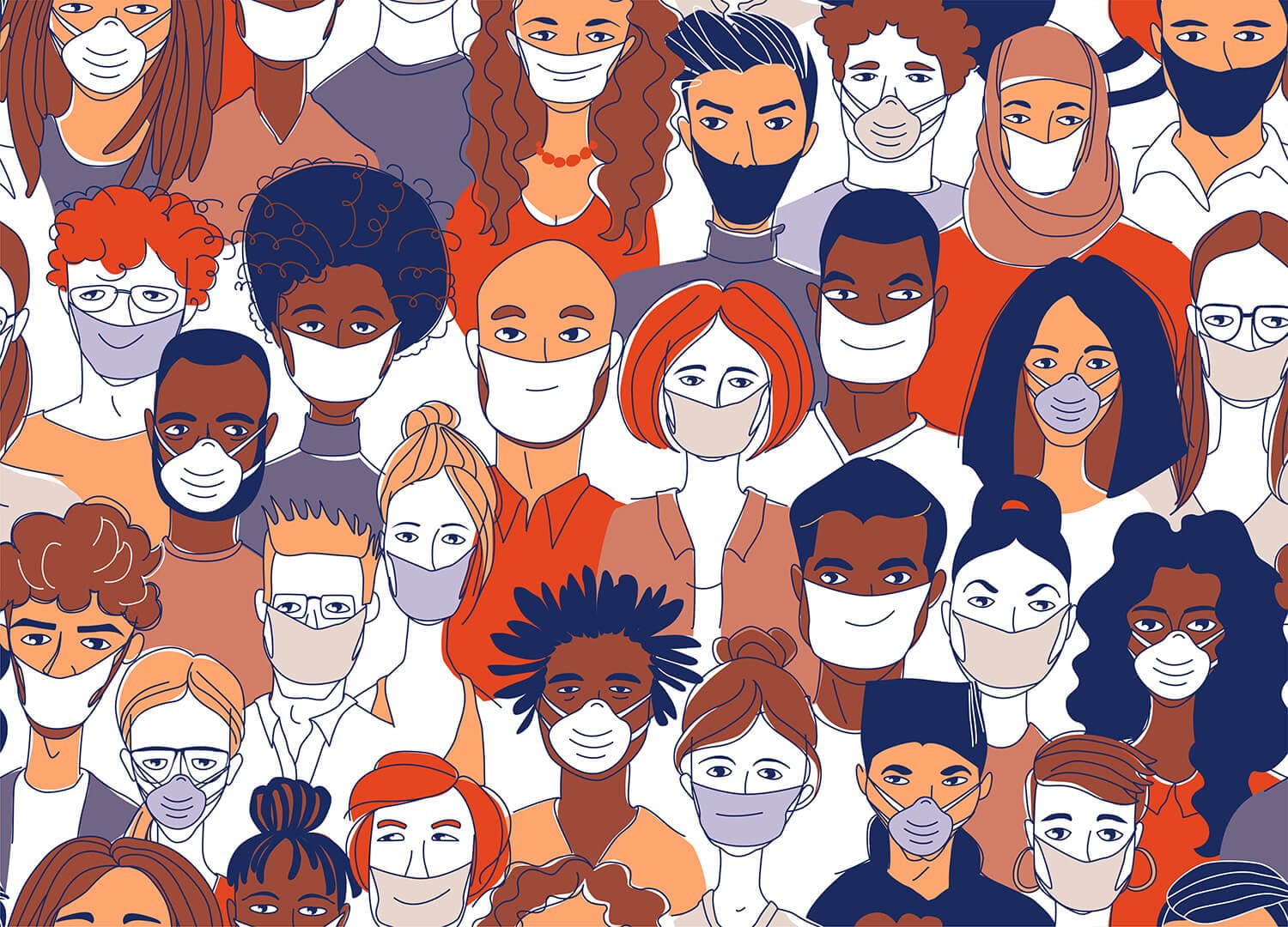Perceptions About COVID‑19 and the Employer Response
Weber Shandwick and KRC Research conducted a national survey among 1,004 Americans, 18 years of age and over, from March 16 to 18, 2020 to ask how they feel regarding the pandemic, precautions they’re taking, confidence in medical and healthcare facilities and organizations and support from their employer. The survey, conducted online, is demographically representative of the U.S. adult population.

1. More than half continue to feel coronavirus fears are overblown.
- More than half (55%) agree coronavirus fears are overblown; 41% disagree, and 4% are not sure.
- Younger people (18-44) are more likely to feel fears are overblown (62%)—Gen Z in particular (70%).
- Least likely to feel fears are overblown are people who feel at risk (39%) and seniors (65 years and older, 44%).
2. The number of Americans who feel they are at risk for coronavirus has increased to about a third.
- Overall, 32% say they feel at risk for the coronavirus. Six percent say they know someone who has the coronavirus.
- A higher proportion of people living in urban areas feel at risk (36%) than in suburban (29%) or rural areas (31%). Further, a higher proportion of people living in the Northeast (40%) feel at risk compared to the Midwest (34%), South (27%), and West (30%).
- A higher proportion of Baby Boomers (56 to 74, 40%), seniors (65 years and older, 43%) and retired people (40%) feel at risk compared to younger people.
- About a quarter (24%) of the adult population say they have elderly parents or friends they are checking on.
3. Increasingly, Americans are feeling informed about the coronavirus. Roughly 1 in 10 or fewer say they do not feel informed.
- Most say they are at least somewhat informed about the coronavirus—what it is, and how it is transmitted (92% very or somewhat informed, 52% very).
- Most say they know what to do if they think they may have come into contact with the virus (88% very or somewhat informed, 50% informed).
- Most say they know what government officials and authorities are doing (86% very or somewhat informed, 46% very).
4. A large majority say they are taking precautions—9 in 10 are taking at least one of the following precautions:
- 70% are regularly washing hands and avoiding touching their face or surfaces,
- 67% are staying home as much as possible and avoiding groups—76% 55 and older; and 75% Baby Boomers,
- 55% are practicing “social distancing,”
- 41% have stocked up on groceries and other essential items,
- 28% have cancelled or postponed personal travel—35% of those employed, and
- 31% of the employed say they are working from home.
5. Confidence in medical and healthcare facilities and employers remains high, confidence in local schools and the federal government has increased, and confidence in the federal government is now at 62%.
- 79% are confident (33% very) that U.S. medical and healthcare facilities will be able to handle an outbreak of the coronavirus—up from 75% in two weeks.
- 70% are confident (27% very) in local schools can handle an outbreak —up from 48% in two weeks.
- 63% are confident (22% very) in businesses to handle an outbreak.
- 73% of employees are confident (34% very) their employer can handle an outbreak—up from 60% in two weeks. Confidence is much greater (81%) among employees who have received information from their employer compared to those who have not received information (36%).
- 62% are confident (23% very) the federal government can handle an outbreak —up from 55% in two weeks. Confidence is greater in the Midwest (69%) and South (67%) than in the Northeast (52%) and West (56%).
6. Trust in the CDC has increased and remains at the top of the list of sources people trust A LOT to provide accurate and honest information about the coronavirus, followed by their doctor.
- 70% have a lot of trust in the Centers for Disease Control and Prevention (CDC) to provide accurate and honest information—up from 62% over two weeks. Women (77%), seniors 65 years and older (79%), and Baby Boomers (77%) have most trust in the CDC.
- 54% trust in the World Health Organization (WHO)—up from 42% over two weeks. Gen Z (65%) has more trust in WHO than other age groups (similar for CDC).
- 50% trust in their doctor—unchanged.
- 48% trust in the U.S. Department of Health and Human Services—up from 37% two weeks ago.
- 44% trust in their state health officials—up 34% over two weeks.
- 43% trust in the National Institutes of Health (NIH)—up from 33% over two weeks.
7. A much higher proportion of people employed full- or part-time have received information from their employer—and this is accompanied by a greater proportion feeling their employer puts safety of workers above profit.
- Employees who received information from their employer on the coronavirus which explained its policies and actions increased 39 percentage points from 42% two weeks ago to 81% now.
- 79% say their employer puts safety first—up from 54% over two weeks. Those who received information are more likely to feel their employer puts safety of workers above profits (88%), compared to those who did not receive employer information (43%).
- 77% feel their employers’ response is exactly what it should be. Those who received information are more likely to feel their employers’ response is what it should be (88%) compared to those who did not receive employer information (33%).
- But workers are nervous: 50% are concerned they will lose their job or income. The concern is higher among men (56%) than women (42%); younger people than older (67% Gen Z), and Hispanics (65%) more than others.
Please click here to download a PDF of these findings.